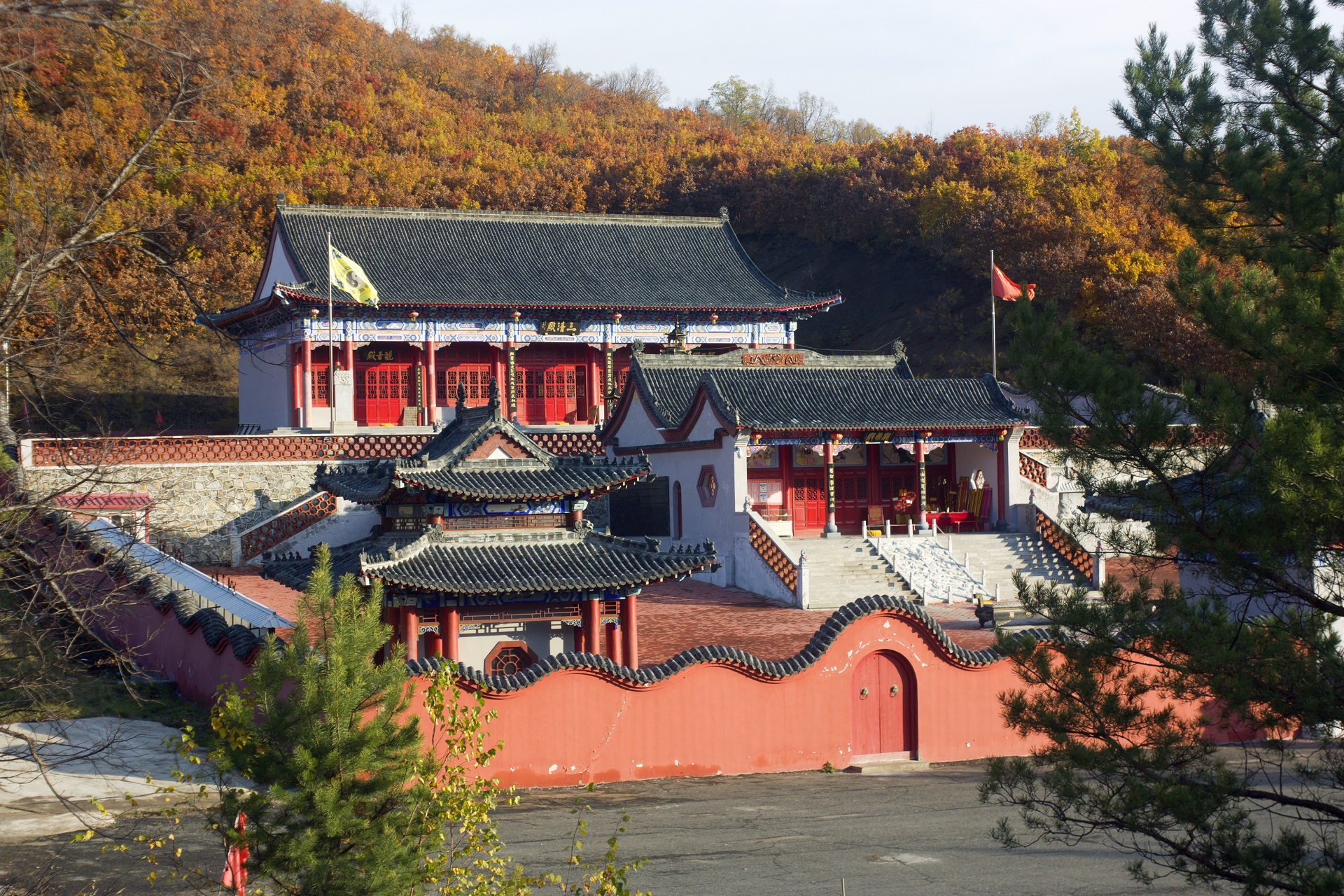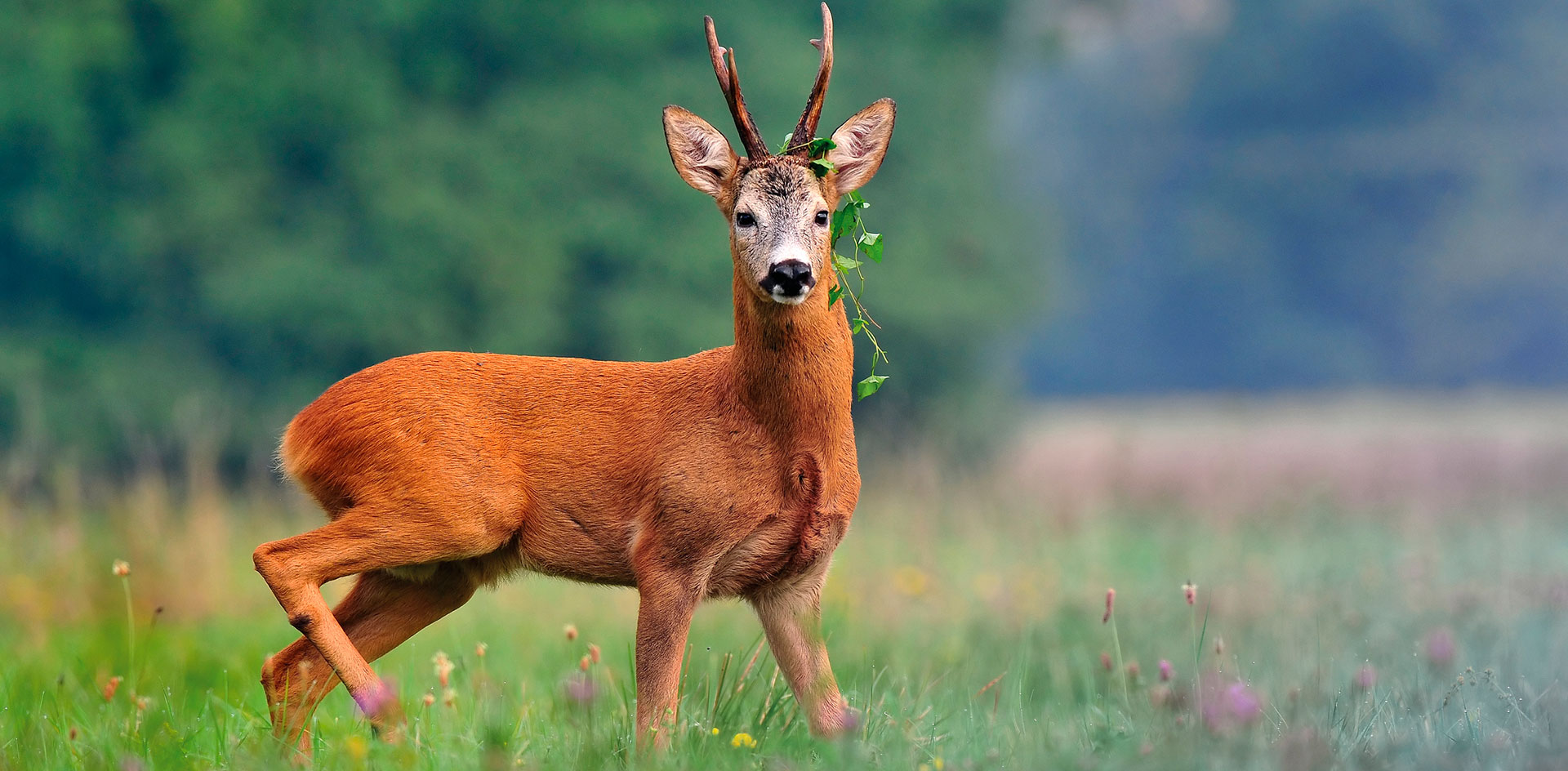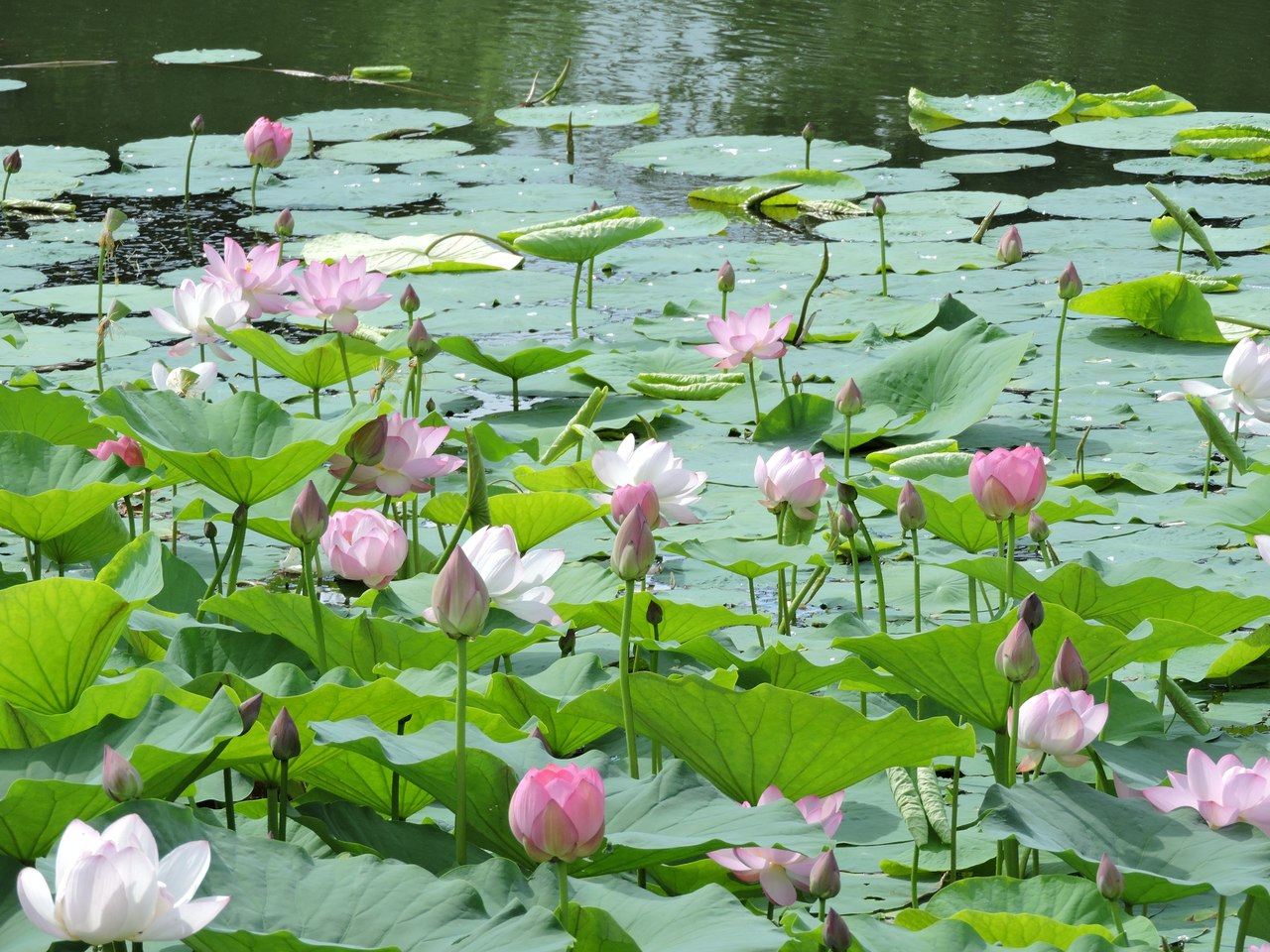The Vostochnyy Cosmodrome, nature reserves, HPP, dinosaurs, lotuses and the border town of Heihe are among major landmarks of Amur Region. What to see and where to go in Amur Region.
 Visit the Vostochnyy Cosmodrome
Visit the Vostochnyy Cosmodrome
The first civilian spaceport in Russia, Vostochnyy is also the most innovative cosmodrome in the world so far.
Tourists are allowed to visit Vostochnyy both during the launch and between the launches. During the launch time, you have a chance to watch a rocket being installed on the pad or a spacecraft going off to outer space. Between the launches, you are welcome to visit the engineering complex where rockets are prepared for the launch. It includes the 37 m high operation and checkout facility, with a total surface of almost 45,000 sq. m, and the mobile service tower, a unique seven-tier structure soaring 52 m into the sky and weighing 1,600 t.
What strikes tourists most is the immense size and scale of Vostochnyy.
In addition to the spaceport itself, travellers can also visit Tsiolkovskiy, the young Russian city built in the very heart of Amur forests. Tsiolkovskiy (or formerly Uglegorsk, as it was called in Soviet times) used to be highly classified. Nowadays the city is still closed, but tourists are allowed to take a walk along its streets. In Tsiolkovskiy, there is a museum of space exploration history with a collection of most interesting objects from the dawn of the space era to our days.
Those who are looking for adventures will also find something special. They can go on a quest for abandoned missile silos. Originally the town was called Uglegorsk ('city of coal mountains' in Russian), although there was no coal production in the region. The name was supposed to mislead the potential enemy and hide the local missile division from foreign intelligence. Missile silos were disguised as coal mines.
 2. Visit an international boundary
2. Visit an international boundary
Blagoveshchensk, the capital of Amur Region, is the only Russian city located on the state border, in some 800 m from its Chinese counterpart Heihe.
Russian citizens can visit Heihe without a visa. For many tourists, it takes a while to understand that the high-rises across the river belong to another country; they ask passers-by how to get 'to that other part of your city'. Actually, it is easy. In summer, there are motor ships, and in winter, when the river is frozen, you can cross it on the ice by bus. In spring and autumn, Blagoveshchensk and Heihe are connected by hovercraft.
In three years, you will have two other options to get to China: an international motorway bridge and a transboundary cableway.
In Blagoveshchensk tourists can take a walk to explore the history of its merchants and see the landmarks, mostly located close to the waterline.
Travellers enjoy the visit into the museum of local history with its huge and unique collection. Opened in 1891, it is the first museum in the Russian Far East. Its holdings consist of over 155,000 exhibits, many of them absolutely unique. You can see, for instance, a 30 kg shard of the Ust-Nyukzha meteorite, 17th-century samurai armour and clothing and attributes of Dahurian and Evenki shamans from the late 19th and early 20th centuries.
3. See one of dinosaur 'deposits'Today Amur Region is the centre of dinosaur studies in Russia. Dinosaurs lived there about 65 million years ago. For the first time, their bones were discovered close to Blagoveshchensk: the south-eastern outskirts of the city host the 'cemetery of dinosaurs'.
But the largest findings were yet to come. During construction of a road near Kundur Town (360 km away from Blagoveshchensk), workers discovered an almost complete skeleton of a giant plant-eating lizard with a head of 110 cm in diameter. The skeleton is measured 10 m from head to tail, and its height is 4.5 m. The dinosaur had a very long neck, which explains why scientists called it Swan.
The palaeontological museum of Amur Research Centre at the Far-Eastern Department of the Russian Academy of Sciences was established in 1997 to showcase Russia’s largest collection of dinosaur fossils. For a century long, archaeologists have been exploring the 10,000 sq. m area in Blagoveshchensk and discovering more and more bones of those antediluvian creatures.
 4. Explore wildlife sanctuaries
4. Explore wildlife sanctuaries
Amur Region is known for its amazing pristine nature. Over 10% of its territory is specially protected. The region hosts three large federal reserves, over 30 game breeding grounds and 60 natural sanctuaries representing the diversity of Far-Eastern flora and fauna. Travellers have a chance to visit the Khingan, Zeya and Nora natural reserves as well as national parks and breeding grounds.
The specially protected areas have all the necessary infrastructure: cordons, bath-houses, watchtowers and ecological trails. Tourists can participate in fishing tours, boat and car rides. The Khingan natural reserve hosts a reintroduction station for rare birds. All year round, zoologists work to increase the number of the red-crowned crane, white-naped crane and oriental stork. Protected forests are home to the brown bear, Asian black bear, lynx and wolf.
But the king of the land is, of course, the Amur tiger. Several tigers have been released in the reserves to live in the natural habitat.
To see the boundless Amur forests in their beauty, you can climb on the top of mysterious mountains. The Tukuringra Range, a calling card of Zeya District, is located within the Zeya natural reserve.
The highest point for tourists to climb on is 1,200 m.
The two-day trip does not require any special skills, so even an untrained tourist can make it. Tukuringra is believed to be 'a place of force', a source of living natural energy. On their way up, travellers can take a breath on the 'thunder plateau'. In a thunderstorm, this place is often hit by lightning bolts.
Another location to admire astonishing views from is located on the boundary between Amur Region and Khabarovsk Territory. It is the Ezop Range (Selemdzhinskiy District). To climb Ezop, you need to be an experienced mountaineer.
At the foot of the mountains, there is a village of the Evenki, the indigenous people of the North. The hospitable Evenki are happy to meet tourists, show their national crafts and teach how to bake bread over the fire, erect a chum (national tent dwelling) and disassemble a sledge. Guests can enjoy a reindeer ride and attend ancient rites.
 5. Open a window to the past and explore the art of ancient people
5. Open a window to the past and explore the art of ancient people
Amur Region boasts several unique historical monuments. Rock paintings, or petroglyphs, have long attracted both scientists and common people. These are unique messages sent to the modern age from a long time ago.
The petroglyphs can be found in Magdagachi, Arkhara and Tynda Districts.
One of the oldest—the Arbi Petroglyph—is located in Zeya District. It is a massive granite rock on the riverbank, 30 m high and 120 m long, covered with pictures of mythological zoomorphic creatures in red ochre. The pictures are dated by the dawn of the Common Era.
The petroglyphs are located deep in the wild forest, which makes them difficult to reach. Nevertheless, there are always some travellers ready to go all the way to see the scenes from the life of ancient humans.
 6. Dive into the history of exploration of Amur Region
6. Dive into the history of exploration of Amur Region
You can visit the Albazino fortress, a unique historical complex and the first Russian stronghold on the Amur river. It was erected and reinforced by pioneers in the second half of the 17th century. Today Albazino is the only Amur’s archaeological monument of federal importance.
Albazin was the first chapter in the Russian history of the Far East.
The name of Albazin was first mentioned in 1650 when the squad of Russian pioneers led by Yerofey Khabarov conquered a town of Dahurian Prince Albazy in the Upper Amur. The fortress took its first 'trial by fire' in summer 1670 when it was besieged by the Manchu. There is almost no information about that time. Subsequently, the fortress survived two other heroic sieges. In 1685, 600 Russian warriors resisted the attack of a 10,000-man Manchu army. The third Albazin siege lasted five months. As a memorial to those heroic battles, there is a six-metre cast-iron cross dedicated to the pioneer Cossacks and a chapel where the defenders of Albazin have been buried.
Travellers have a chance to visit the territory of former Albazin fortress and Saviour’s monastery and to discover the everyday life of Cossacks in the 19th century. The Albazino museum shows archaeological findings telling the story of the exploration of the Amur Region. It also hosts a 19th-century log house with a masonry stove and traditional home utensils surrounded by a barn, a smithy and 'black' bathhouse. Some of the objects are dated back to the 17th century: they help us imagine what the life of that time looked like. Models of fortresses and arms tell the military history of Albazin.
7. Touch the icon of Our Lady of AlbazinoA relic of Russian Far East, the icon has been considered miraculous for about 400 years. Our Lady of Albazino, also known as 'The Word Was Made Flesh', is an icon of Mother of God venerated by the Russian Church. The locals attribute it to the 'seven wonders of Amur Region'.
The icon is painted on canvas stretched on a 73x67 cm wooden board. It is still not clear when and where it was created. Historians assume that the icon could be painted by monk Nikodim in 1492. In the 1670s Cossacks brought it to Albazin from Siberia. Since that time Our Lady of Albazino has been seen as the Holy Protectrix of Amur Region. Today the icon is hosted by the Annunciation Cathedral of Blagoveshchensk.
 8. Visit the Bureya Hydroelectric Power Station
8. Visit the Bureya Hydroelectric Power Station
One of the largest hydroelectric power stations in Russia and the most powerful hydroelectric station in the Far East is located on the Bureya river. The river, which name means 'big' in the Evenki language, has its origin in mountains at the altitude of 1,700 m, on the boundary between the Ezop and Dusse-Alin mountain ranges.
Tours should be pre-arranged in advance. Guests will visit the machinery room and see the panel of station control. The station features several viewing areas as well.
Downstream, there is a smaller power station known as Lower Bureya, also important despite its size. It serves as a compensating reservoir for the main station and is also open for tourists.
The third power station of the Far East, Zeya Station, is located in Zeya District. It boasts the highest in Russia buttress (or hollow) dam. There is no other station of this type in the Russian Far East. Travellers can get inside the dam itself and see how it works.
9. See Buddha's flowerAmur Region is proud to have vast plantations of Indian lotus, a relic plant listed in the Red Book. Every year, hundreds of tourists come both from Russia and abroad to see this wonderful flower in full bloom. In Amur Region, lotus is grown in the southern Blagoveshchensk, Ivanovka and Bureya Districts. The lotus lake became a calling card of the village of Ivanovka 30 km east of the city of Blagoveshchensk. The lake features about 200 flowers which became a symbol of Amur Region.

Only in Blagoveshchensk, you can watch Russian and Chinese teams playing hockey right on the ice of the border river.
The region already hosts several annual events held concurrently in the territory of both neighbouring countries. In winter, it is Concord International Hockey Match. The rink and stands are installed right on the inter-state boundary. The first match of this kind took place in 1958; almost 60 years later, it was decided to carry on this good tradition Nowadays, the teams of Amur Region and Heilongjiang Province come together on the ice of Amur every year.
In summer, everybody is welcome to participate in another spectacular event, Friendship International Swim.
It has been convened between Blagoveshchensk and Heihe since 2001. Russian and Chinese athletes, with their national flags, swim across the Amur river towards each other. On both banks of Amur, there are welcoming parties waiting for the participants.

One of the main cultural events of the region is the Russian–Chinese Fair of Art and Culture, an international festival held in Blagoveshchensk and Heihe with various exhibitions and master classes. It attracts many creative studios, writers, artists, and cultural figures not only from Amur Region and the Far East but from across entire Russia. In February 2020 there will be the first motor rally on the Amur river. In the future it can become another annual event.